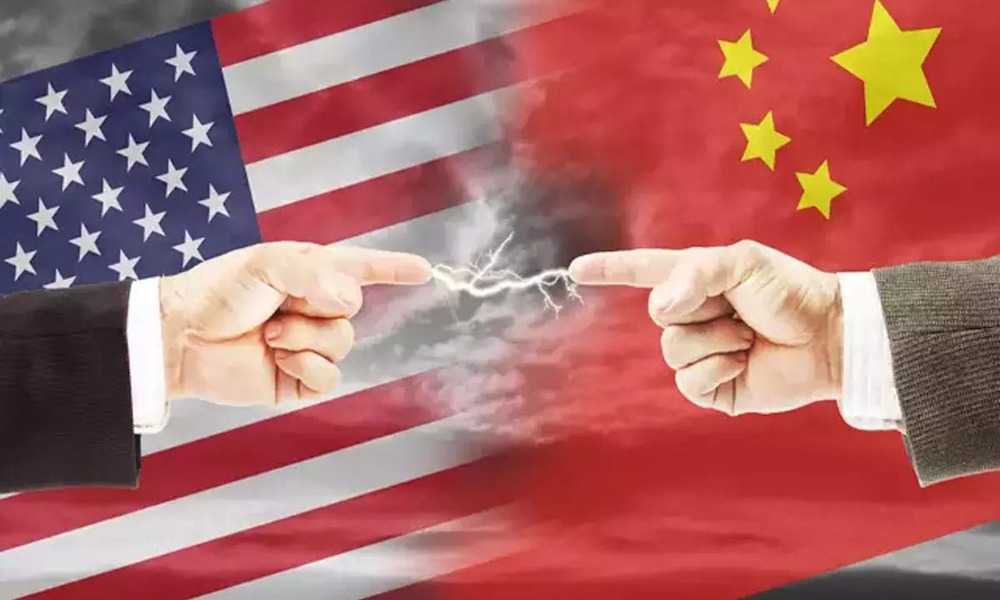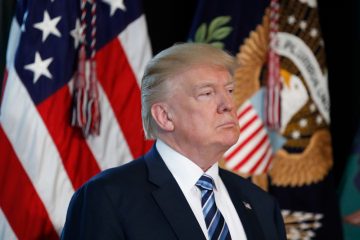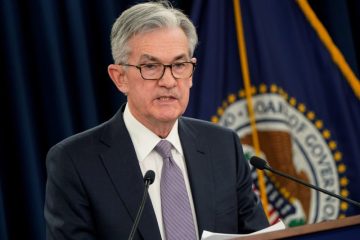China fears Trump will prevail in trade war

China harbors concerns regarding the potential for a Trump victory in trade negotiations. Shortly after Donald Trump’s victory in the presidential election in November, Xi Jinping instructed his advisors to conduct an urgent analysis of the Cold War competition between the United States and the Soviet Union. According to sources familiar with discussions among senior Chinese officials, there is apprehension that as President Trump prepares for a confrontation with Beijing, China may find itself in a position of isolation reminiscent of Moscow during that period.
His concerns are not unfounded. While Trump appears to be increasingly isolated on the global stage—engaging in trade disputes with former allies such as Mexico and Canada, raising concerns in Europe regarding his approach to the Ukraine conflict, and making bold claims about annexing Greenland and the Panama Canal—it is important to recognize that China does not possess a particularly advantageous position. In the context of a domestic economic crisis, Xi is adopting a defensive posture, aiming to preserve as much as possible of the global trade framework that has been instrumental in lifting his nation out of poverty. Across the Pacific, Trump is focused on restructuring the trading system, which he and his advisers perceive as having disproportionately advantaged the global economy—and China in particular—at the expense of the United States.
Trade is not the sole factor. The divergent priorities of the leaders of the world’s two largest economies are likely to culminate in the very scenario that China seeks to avert: a superpower confrontation reminiscent of the Cold War, characterized by a comprehensive rivalry encompassing economic, technological, and geopolitical dominance. Trump, emphasizing the imperative to address the challenges posed by China during his campaign, secured a decisive victory and restored Republican dominance in Congress upon his return to the White House. According to advisers, he is confident in his ability to engage with Beijing from a position of strength. According to these individuals, many of his initial diplomatic actions ought to be interpreted within that framework. Trump is attempting to resolve the conflicts in the Middle East and Ukraine to concentrate more effectively on China, according to reports. His recent enthusiastic alignment with Russia and its authoritarian leader, Vladimir Putin, is motivated in part by a calculated intention to create a rift between Moscow and Beijing.
One rationale behind Trump’s desire for U.S. control of the Panama Canal is his perception of the Chinese infrastructure developed over the past thirty years as a potential national-security risk. On Tuesday, a notable development occurred as a consortium of investors, spearheaded by the U.S. asset management firm BlackRock, reached an agreement to acquire majority stakes in ports at both ends of the Panama Canal from Hong Kong-based CK Hutchison. “The actions being undertaken are aimed at reallocating resources to effectively counter China’s influence,” stated an administration official. On Tuesday, Trump escalated tariffs on China, attributing the decision to the country’s involvement in the fentanyl crisis affecting the U.S. This move caught Chinese officials off guard as they were still strategizing on how to engage with what they perceive as an unpredictable leader from the United States.
China, having sought to redefine the global order through its alignment with Russia in opposition to Western influence, now appears to be in a position of disadvantage. The scenario troubling Xi involves China facing trade barriers and sanctions, leading to a situation reminiscent of Soviet-era isolation, characterized by diminished markets for its exports and restricted access to essential technologies. “Currently, China faces the risk of becoming the focal point of a comparable rivalry,” remarked an advisor to Beijing. “Xi posits that this must be circumvented.”
The challenge facing Beijing in formulating its strategy towards the United States lies in the reluctance of Trump’s inner circle to participate in meaningful dialogue. In the initial weeks of his administration, Trump has not prioritized China as a central issue. His immediate objectives focus on addressing illegal immigration, reducing government expenditure, and bringing an end to the conflict in Ukraine. As Xi anticipates a clearer understanding of U.S. expectations from Beijing, his economic advisors are strategizing potential countermeasures against Trump.
Since November, China has sent multiple delegations to Washington to investigate possible agreements with the new administration, contending that tariffs would exacerbate the inflationary pressures in the U.S. that Trump is attempting to control. Concurrently, Beijing has cultivated a range of instruments—such as export restrictions on essential minerals—to impose economic strain on the United States and has been engaging with America’s longstanding allies to brace for a more pronounced confrontation with Washington. One insight Xi has gained from the initial trade conflict with Trump is that China stands to incur greater losses by retaliating against Trump’s tariff increases with equivalent levies, as the United States imports significantly more from China than it exports in return.
Michael Pillsbury, a specialist on China affiliated with the conservative Heritage Foundation and an advisor to the administration, indicated that he has engaged with representatives from Chinese delegations that have traveled to Washington following the election. The initiative undertaken by China can be characterized as a strategic endeavor aimed at mitigating the imposition of tariffs, he stated. Pillsbury remarked that they exhibit a certain level of desperation. “The economic situation is precarious.” The imposition of tariffs by Trump indicates a recognition of the campaign’s shortcomings.
Nevertheless, as Washington intensifies its pressure, Beijing seeks to convey a sense of assurance. In response to Trump’s recent tariff measures implemented this week, China promptly enacted countermeasures. In the interim, Beijing has established a growth target of approximately 5% for 2025, indicating its anticipation that the Chinese economy will withstand increasing trade pressures. A spokesperson for the Chinese Foreign Ministry adopted a resolute position, asserting, “Should the U.S. desire conflict, whether it be a tariff war, a trade war, or any other form of confrontation, we are prepared to engage until the conclusion.”
Trump and Xi appeared to be embarking on a promising trajectory, reminiscent of the initial phase of Trump’s first term in 2017. The American leader extended an invitation to Xi for his inauguration on January 20. Although the Chinese leader opted to send his vice president in his stead, this action can still be interpreted as a gesture of goodwill from a leadership typically cautious about political risks. Both leaders have indicated a desire to convene a summit. Such diplomatic formalities, however, merely obscure the underlying actions—and what is likely to unfold for China.
Trump’s “America First” policy fundamentally advocates for the disassembly of the frameworks established by the World Trade Organization since 1995. Within the framework of these norms, China has successfully inundated global markets with low-cost exports while simultaneously restricting foreign access to its domestic market. The central authority in China exerts significant influence over economic management. China typically opposes perceived external efforts to undermine the authority of the Communist Party. Observers reference a proposed agreement that Beijing declined in May 2019, following extensive negotiations amid the peak of the trade conflict with the initial Trump administration. The proposed agreement included amendments to Chinese legislation aimed at preventing the theft of American technology and enhancing protections for American firms in China—revisions that Xi deemed unacceptable.
According to sources, Trump is not hastening negotiations with Xi, attributing this stance to the robust economic position of the United States. The administration is formulating various forms of leverage and pressure that may be employed in negotiations, according to a source. Trump maintains the conviction that he can implement measures such as tariffs, while concurrently anticipating that his personal rapport with Xi may lead to a mutual understanding between the two nations, according to sources. During the initial four years of Trump’s administration, spanning from 2017 to 2020, there was a significant transformation in U.S. policy regarding China. The previous approach of enhancing economic relations and collaborative interaction with Beijing has been supplanted by a strategy marked by estrangement, featuring heightened tariffs and technological restrictions.
Despite President Joe Biden’s continuation of an assertive strategy, his administration predominantly maintained a stable relationship. The Biden administration has reinstated numerous channels of communication with Beijing. In a development that is likely to concern Beijing, Trump’s approach in his second term appears to be characterized by reduced restraint and increased determination, setting the stage for potentially heightened tensions between the U.S. and China.
In recent months, discussions with American business and intellectual leaders have seen Xi and his associates consistently articulate Beijing’s intention to position itself as a collaborator with the U.S., rather than a direct competitor, as reported by attendees of these meetings. “They have conducted a thorough analysis of Trump and possess a pragmatic understanding of the current circumstances,” stated Graham Allison, former dean of Harvard Kennedy School, who has engaged with Xi and other high-ranking Chinese officials over the past year. “Xi has articulated his vision of a relationship in which the U.S. and China function as both competitors and collaborators at the same time.”
Trump’s recent imposition of tariffs has revealed significant vulnerabilities in Beijing’s cautious strategy regarding its dealings with Washington. Following the imposition of the initial 10% tariffs on Chinese goods by Trump in early February, sources familiar with Beijing’s perspective indicate that China’s leadership has been awaiting concrete demands from the Trump administration, anticipating that such requests could pave the way for a more extensive dialogue. According to sources, Xi is not inclined to propose a deal solely concerning fentanyl. Instead, they indicated that Xi aims to initiate a dialogue with Trump that could pave the way for a more extensive agreement and clarify the broader relationship.
Vice President Han Zheng, representing Xi at Trump’s inauguration on January 20, conveyed to Trump’s officials Beijing’s openness to engage in discussions covering various subjects, including fentanyl and trade, according to sources. The recent imposition of a 10% additional tariff by Trump has been described by sources as “rather unexpected,” with indications that the Chinese side has been anticipating a more conciliatory approach from the U.S. in terms of negotiating conditions.








